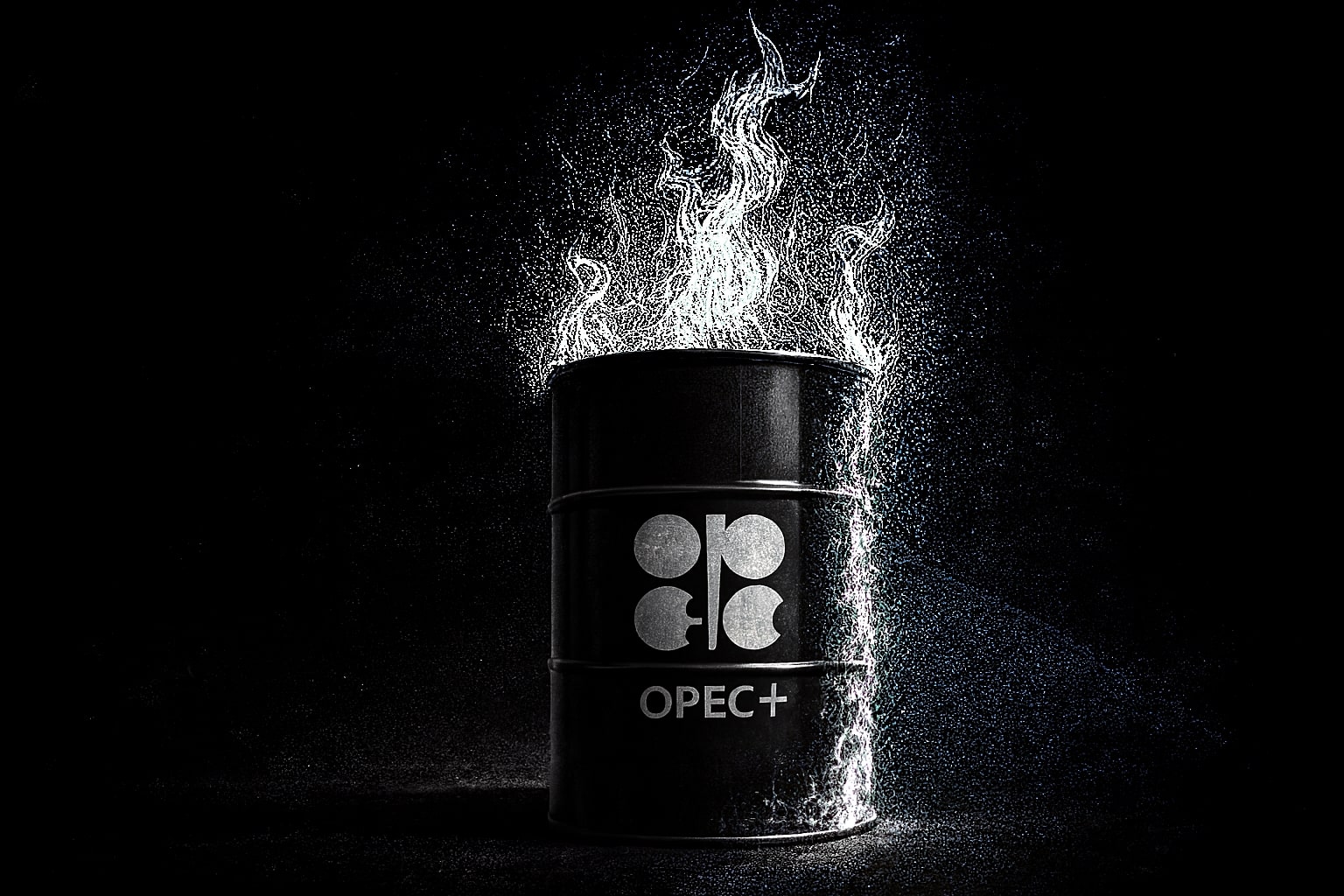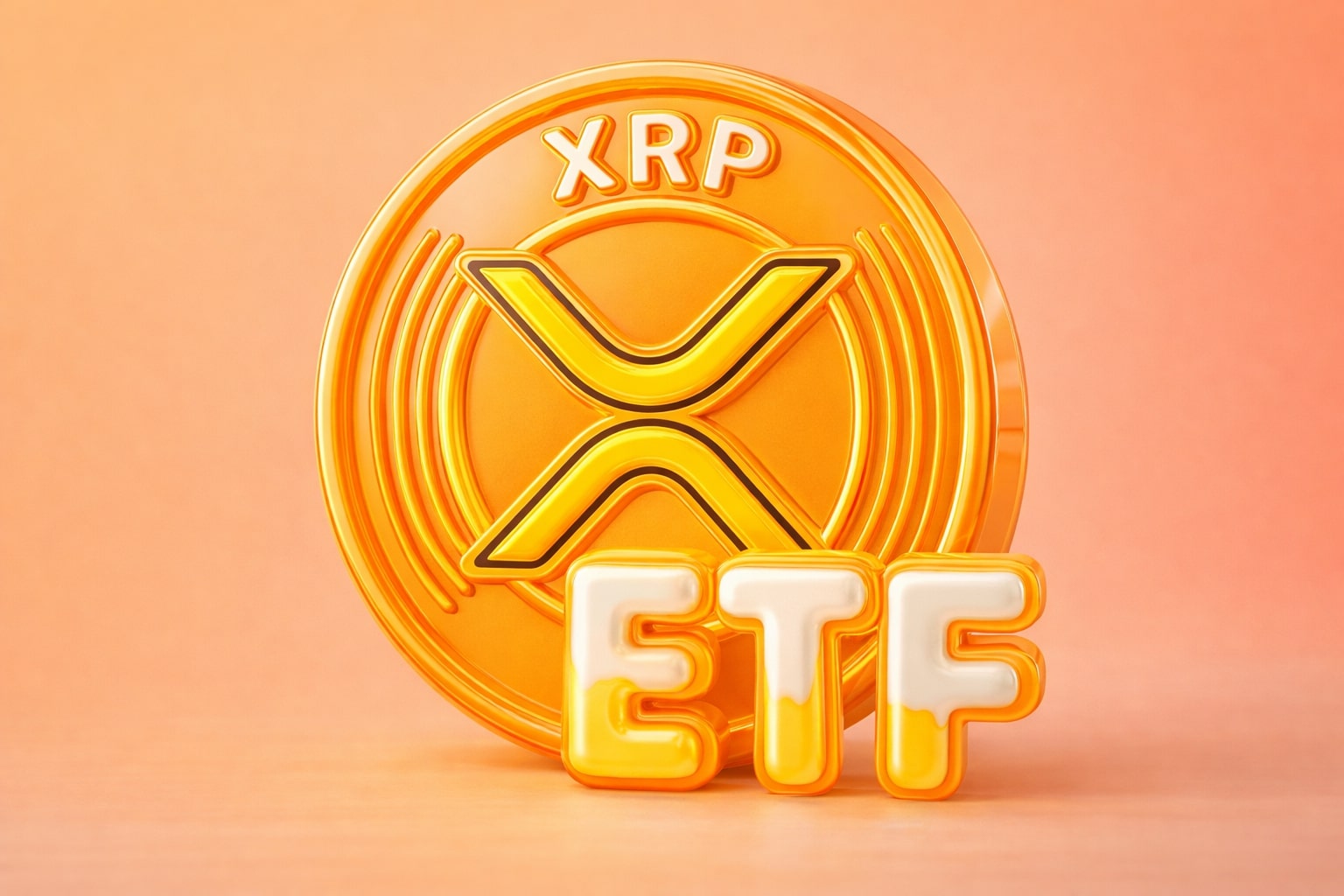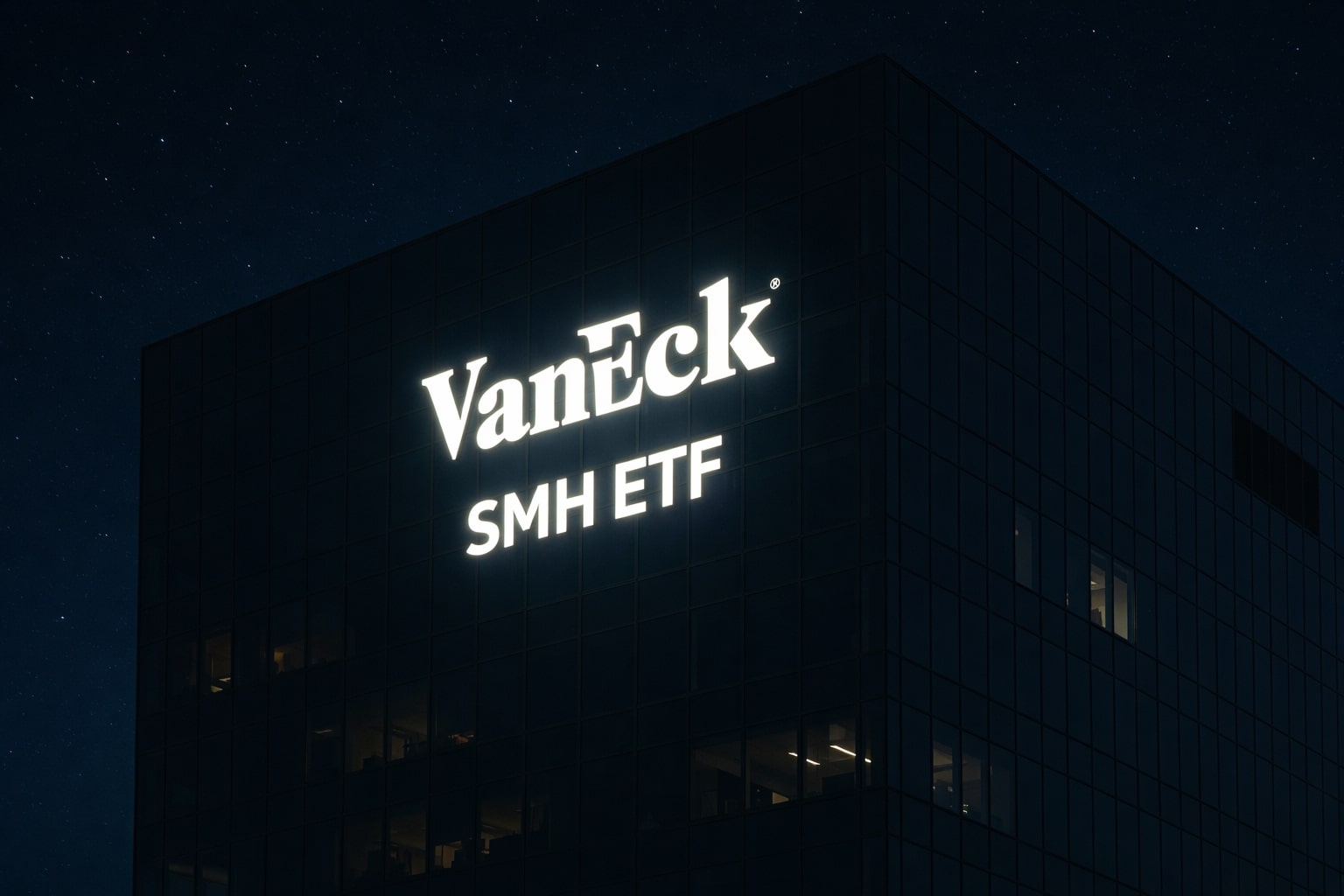
Natural Gas Price NG=F Breaks to $4.65 on Historic LNG Demand and Winter Shock
Record 17.7 Bcf/day exports, a 67% yearly surge, a 58% 2025 Henry Hub jump, and first real winter cold ignite the strongest natural-gas rally since 2022 | That's TradingNEWS
Natural Gas NG=F Breakout Driven By Cold Blast, LNG Drain And A Repriced Global Balance
Natural gas NG=F has surged toward the $4.50–$4.65 per MMBtu zone, registering its strongest levels since the volatility that followed Russia’s 2022 invasion. December futures settled near $4.646, a 67% year-over-year jump, while January lifted to $4.843, showing traders aggressively bidding winter risk. Snowfall across Chicago and the upper Midwest activated early heating demand, but the deeper driver is the structural pull of record U.S. LNG exports, which reached 17.7 Bcf/day after rising 5.9% week-over-week. The combination of winter weather, global supply shortages, and U.S. liquefaction running at maximum throughput created a backdrop where NG=F reclaimed price territory that analysts believed would remain unreachable until mid-winter. This shift comes only a year after the U.S. sat on one of the worst natural-gas gluts in modern history, proving that structural export flows can drain surplus at speeds domestic fundamentals alone could never match.
NG=F Supply And Demand Imbalance Shifts As Production Stays High But Consumption Diverges
The underlying fundamentals of NG=F reflect an unusual tension. U.S. dry gas production remains enormous at 109.9 Bcf/day, up 7.1% from last year and still near historical highs. At the same time, domestic demand eased to 80.0 Bcf/day, about 5.5% lower year-on-year. Under normal cycles, these numbers would pressure prices sharply. Instead, exports and power burn are absorbing a massive share of the oversupply. Natural gas now fuels roughly 43% of U.S. electricity generation, a figure set to climb as AI data-center electricity consumption may rise up to 160% by 2030, according to industry projections. This means that NG=F is no longer simply a weather-driven commodity. Domestic softness can be overridden by global scarcity, and LNG capacity is tightening the U.S. balance even during shoulder-season warmth. Producers who were crushed by the 2024 collapse now see prices stabilizing at levels that restore margins and cash flow even before deeper winter demand kicks in.
Henry Hub Curve Repricing And The 2025 Utility Shock Hidden Beneath The Futures Market
Henry Hub’s forward curve has been grinding higher month after month. The latest government projections show 2025 Henry Hub prices running 58% above 2024 levels, a massive break from prior expectations. Power plants are expected to absorb a 37% rise in natural-gas costs next year, while industrial buyers face a 21% increase. Households and small commercial users see only 4% hikes because regulated utilities spread out adjustments over billing cycles, moderating volatility. Yet that smoothing mechanism means utilities themselves eat the difference between fast wholesale increases and slow retail pass-through. Last month’s Winter Fuels Outlook predicted an average $3.90 hub price and a seasonal home heating bill of roughly $640 for gas-heated homes. Today’s market has already traded $4.20–$4.65, making those assumptions outdated. If prices stay elevated, consumer bills will lag but eventually adjust upward, and utilities will have to navigate narrower margins while the wholesale market resets higher into 2025.
International Benchmarks Reveal How Undervalued U.S. NG=F Still Is
While NG=F flirts with the upper $4 range, foreign benchmarks show how tight the global system has become. In Türkiye’s spot market, 1,000 cubic meters of natural gas cost 14,607.87 lira. At an exchange rate of 42.32 lira per U.S. dollar, that translates to roughly $345 per 1,000 m³, or nearly $9.8 per MMBtu—more than double U.S. prices. Daily Turkish spot trade volumes near 623,000 m³ may be modest, but pipeline imports of 185.79 million m³/day highlight the scale of international dependence on LNG and pipeline gas. This spread between European-Asian benchmarks and Henry Hub maintains strong U.S. export economics, ensuring that American LNG facilities run at maximum utilization. As long as overseas hubs command premiums near $10 per MMBtu, NG=F will remain supported by global arbitrage even during periods of mild U.S. weather.
EIA Data Shows Wholesale Pain Ahead As Utilities Absorb Fastest Price Surge Since 2008
The Energy Information Administration’s short-term outlook underscores a fast-tightening market. The latest storage report printed a +45 Bcf build, exceeding both the consensus +34 Bcf and the five-year average +35 Bcf, putting inventories 4.5% above historical norms. Despite that cushion, wholesale natural-gas prices for power producers are projected to jump 37% by the end of 2025, while industrial buyers face 21% increases. Residential and commercial rates rise only 4%, cushioned by fixed charges and slower regulatory adjustments. The EIA also raised 2025 production estimates by 1% to 107.67 Bcf/day, showing that high prices will not immediately curtail output. Even so, the agency warns that strong power-sector demand, LNG competition, and elevated storage injections are combining to push retail gas prices higher across nearly every customer category. The Henry Hub spot market has printed higher year-over-year prices every month, confirming that the price floor of the U.S. gas market has permanently shifted upward.
NG=F Technical Structure Turns Into A Battle Between $4.676 Resistance And $4.336 Support
Technically, NG=F remains in a clear weekly uptrend, but the market has hit the first real choke point. The rally stalled within reach of the 50% retracement near $4.676, a level that historically triggers aggressive selling. Clearing that barrier is required to set up a run toward the 61.8% retracement around $4.931, where sellers will likely regroup once again. On the downside, the key floor sits at the 52-week moving average near $4.426, followed by the critical pivot at $4.336. That level has already launched a major bounce once, and a second defense would confirm a structural “buy-the-dip” profile. If $4.336 breaks on heavy volume, the next magnet becomes the $4.142–$4.013 retracement band, an area where longer-horizon buyers typically accumulate. With weather models forecasting above-normal temperatures into late November, the short-term risk skews toward a corrective pullback, but strong export demand and tight global balances continue to protect the medium-term trend.
Weather Volatility And Storage Patterns Keep NG=F In A Trader’s Market
Every short-term move in NG=F remains anchored to weather model revisions and weekly storage surprises. Early-week rallies triggered by colder forecasts were erased immediately when the +45 Bcf storage build and warmer updated models hit terminals. With inventories slightly above the five-year average and forecasts calling for mild conditions through late November, bulls must navigate choppy tape until true winter demand arrives. December cold snaps remain the wildcard. A shift toward broad, sustained cold in the Northeast and Midwest could drive NG=F through $4.676, while continued warmth could push futures back to test the $4.42–$4.33 band. Volatility is unlikely to fade because the market is pricing a collision between soft near-term weather and hardening structural tightness driven by LNG, power-sector consumption and rising global competition for gas.
Read More
-
SMH ETF: NASDAQ:SMH Hovering at $350 With AI, NVDA and CHIPS Act Fueling the Next Move
16.12.2025 · TradingNEWS ArchiveStocks
-
XRP ETFs XRPI and XRPR: Can $1B Inflows Lift XRP-USD From $1.93 Back Toward $3.66?
16.12.2025 · TradingNEWS ArchiveCrypto
-
Natural Gas Price Forecast: NG=F Falls to $3.80–$3.94 as Warm Winter Kills $5.50 Spike
16.12.2025 · TradingNEWS ArchiveCommodities
-
USD/JPY Price Forecast - USDJPY=X Slides, BoJ 0.50% Hike, Fed Cut and NFP Set the Next Big Move
16.12.2025 · TradingNEWS ArchiveForex
Equity Exposure: LNG, EQT, KMI, ET And XOM React To The NG=F Repricing
Several major U.S. companies are already absorbing the impact of this natural-gas repricing cycle. Cheniere Energy (NYSE: LNG), the nation’s dominant LNG exporter with roughly 45 mtpa of liquefaction capacity across Sabine Pass and Corpus Christi, benefits immediately as U.S. gas at $4.20–$4.60 remains highly profitable relative to foreign hubs near $9–$10 per MMBtu. EQT Corp (NYSE: EQT), controlling more than 1 million acres across Pennsylvania, West Virginia and Ohio, gets direct leverage to every incremental cent NG=F rises above breakeven, restoring the economics of Appalachia wells battered by 2024’s crash. Midstream giants like Kinder Morgan (NYSE: KMI), operating 66,000 miles of gas pipelines and storing 15% of U.S. gas capacity, benefit from volume-based revenue as throughput increases. Energy Transfer (NYSE: ET), with 107,000–114,000 miles of pipe and 235 Bcf of storage, gains from rising power-plant connections and dozens of data-center inquiries requiring new pipeline infrastructure. Exxon Mobil (NYSE: XOM), newly bolstered by its $59.5B Pioneer acquisition, leverages its vast U.S. gas portfolio into a high-priced environment offering incremental upside alongside its oil exposure. These names are effectively the equity layer of a macro shift unfolding in real time across the NG=F curve.
Macro Risk: When High NG=F Prices Begin To Reshape Industrial Output And Energy Policy
The rally in NG=F is powerful, but not without consequences. Industrial gas demand is already down 5.5% year-over-year, showing that higher input costs reshape production decisions. If NG=F stabilizes above the $4.80–$5.00 zone for several weeks, older coal units may reenter dispatch curves and policy discussions around LNG export limitations could reappear. Utilities hit by a 37% wholesale cost jump without equivalent retail pass-through could face margin compression and delayed infrastructure upgrades. If winter turns sharply colder, regulators may be forced to accelerate retail rate increases, injecting political pressure into an already volatile market. The risk factors do not derail the structural story, but they place boundaries around how high NG=F can run before triggering policy intervention or demand destruction.
Final Stance On Natural Gas NG=F Across All Data Inputs
With NG=F at $4.50–$4.65, January at $4.843, inventories 4.5% above average, LNG exports at 17.7 Bcf/day, U.S. output near 109.9 Bcf/day, and industrial demand at 80 Bcf/day, the market is balancing short-term warmth against medium-term global tightness. The structural backdrop favors continued strength, but tactical pullbacks remain likely as weather models shift. The technical shelf at $4.426–$4.336 is the battleground for bulls. A hold above this zone keeps the market positioned for another attack on $4.676 and potentially $4.931. A sustained break below $4.336 would force a reset toward $4.14–$4.01 before winter risk is repriced. Taking all data, volatility and global balances into account, Natural Gas NG=F remains a BUY on pullbacks, supported by export strength, 2025 price inflation across the utility sector, and tightening global fundamentals that continue to re-anchor the long-term price floor well above last year’s crash levels.



















